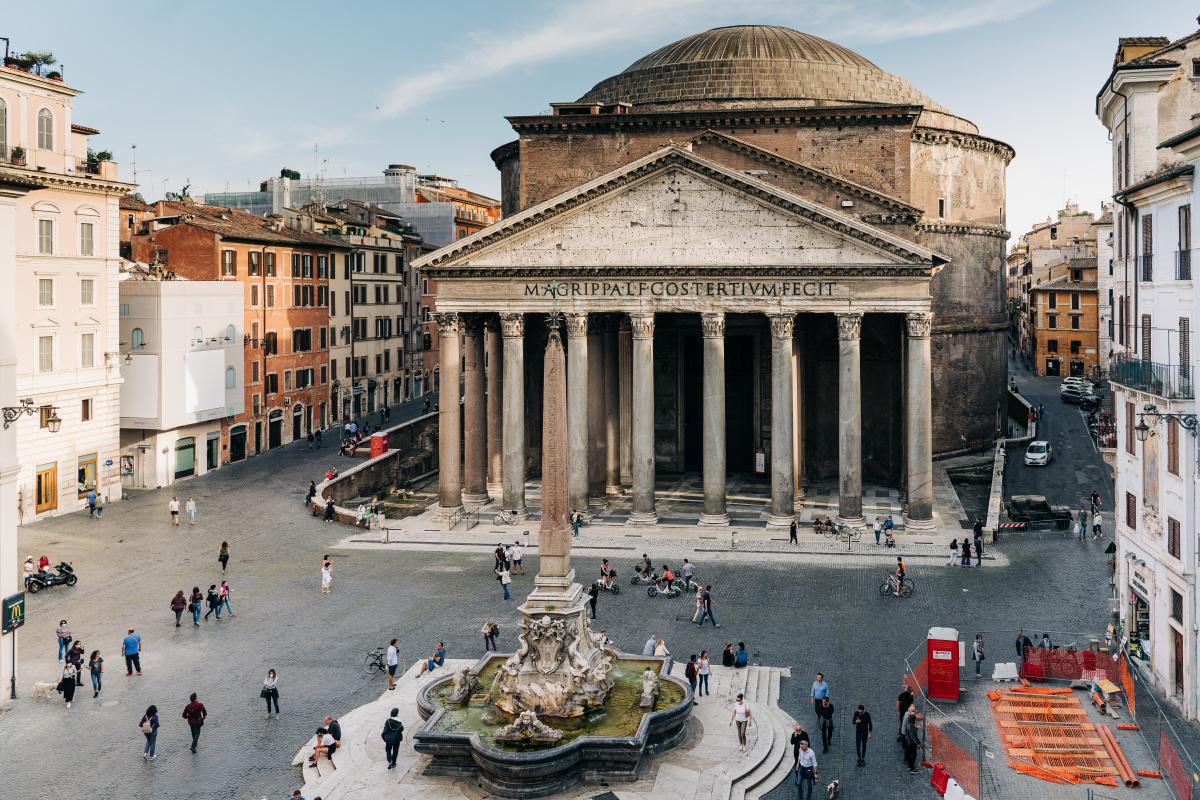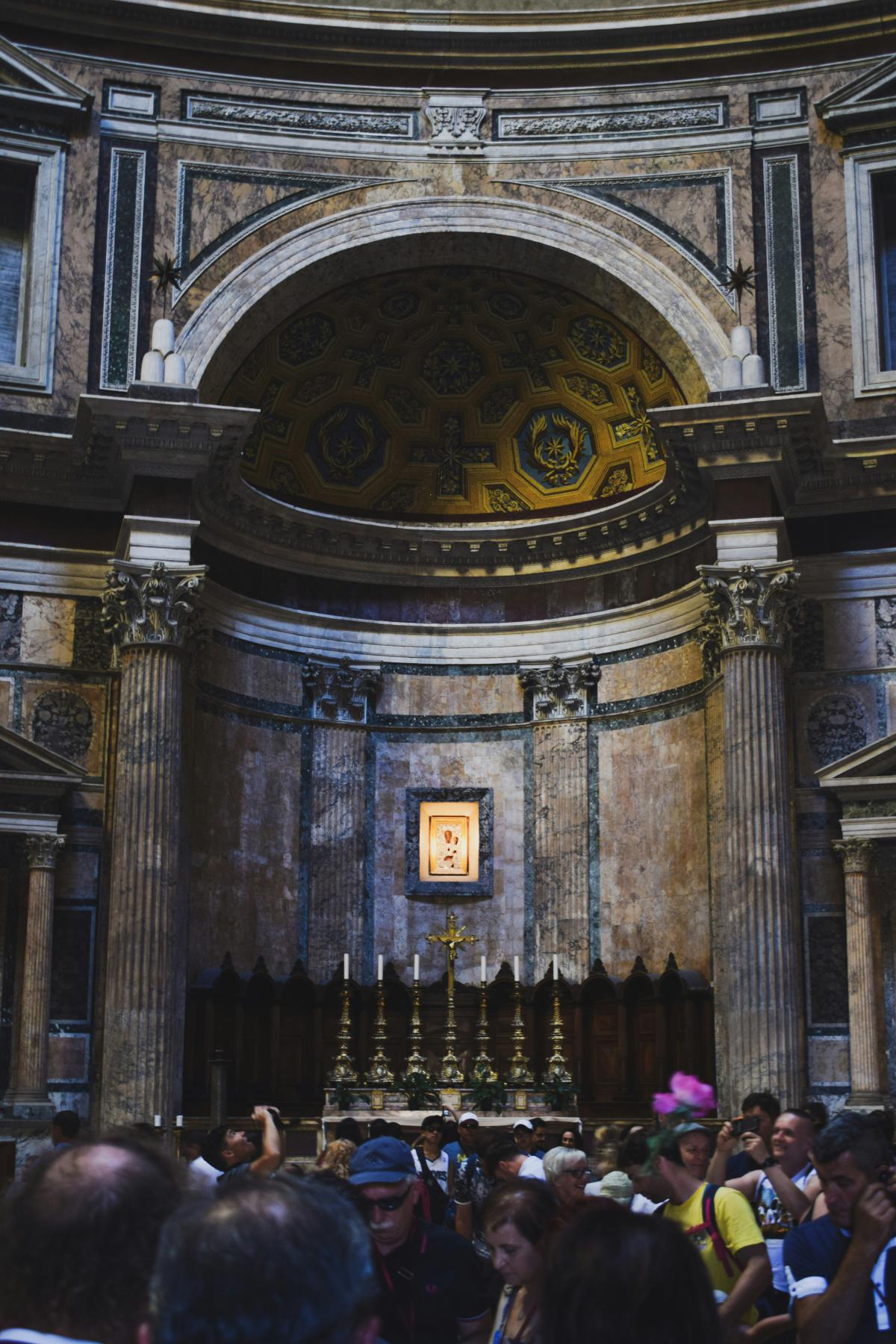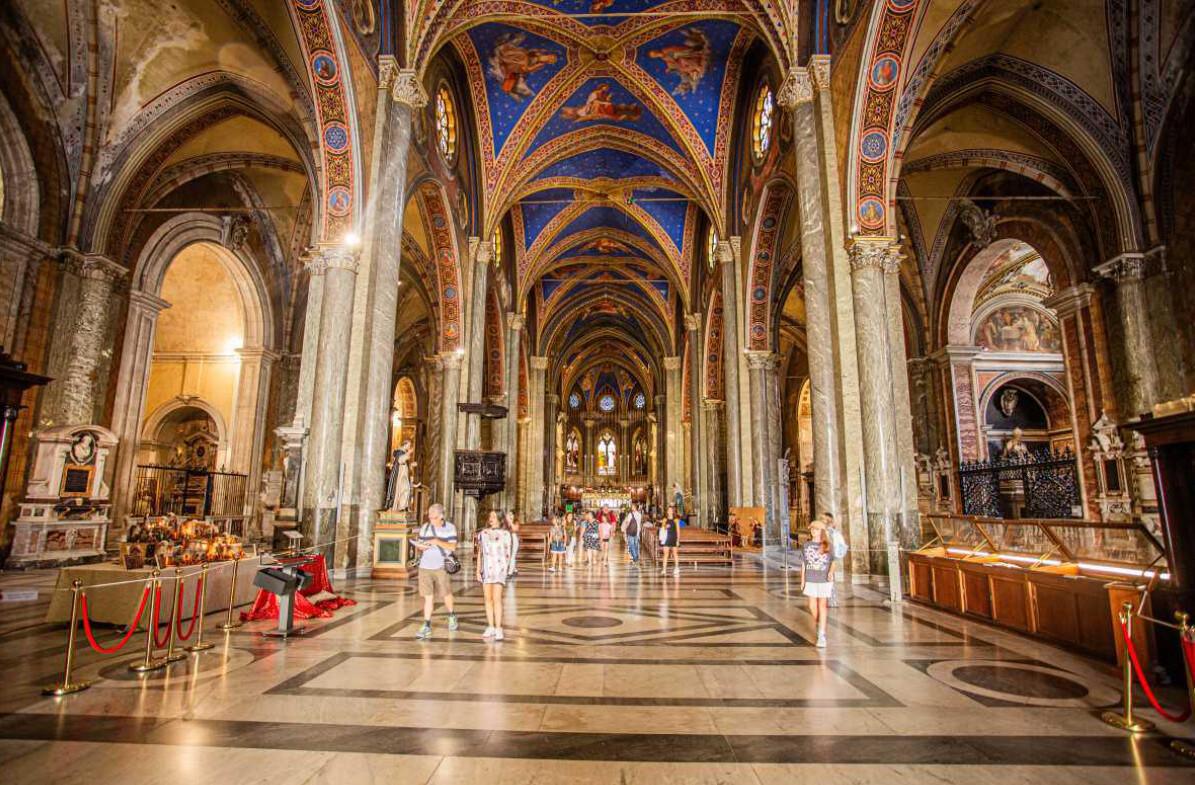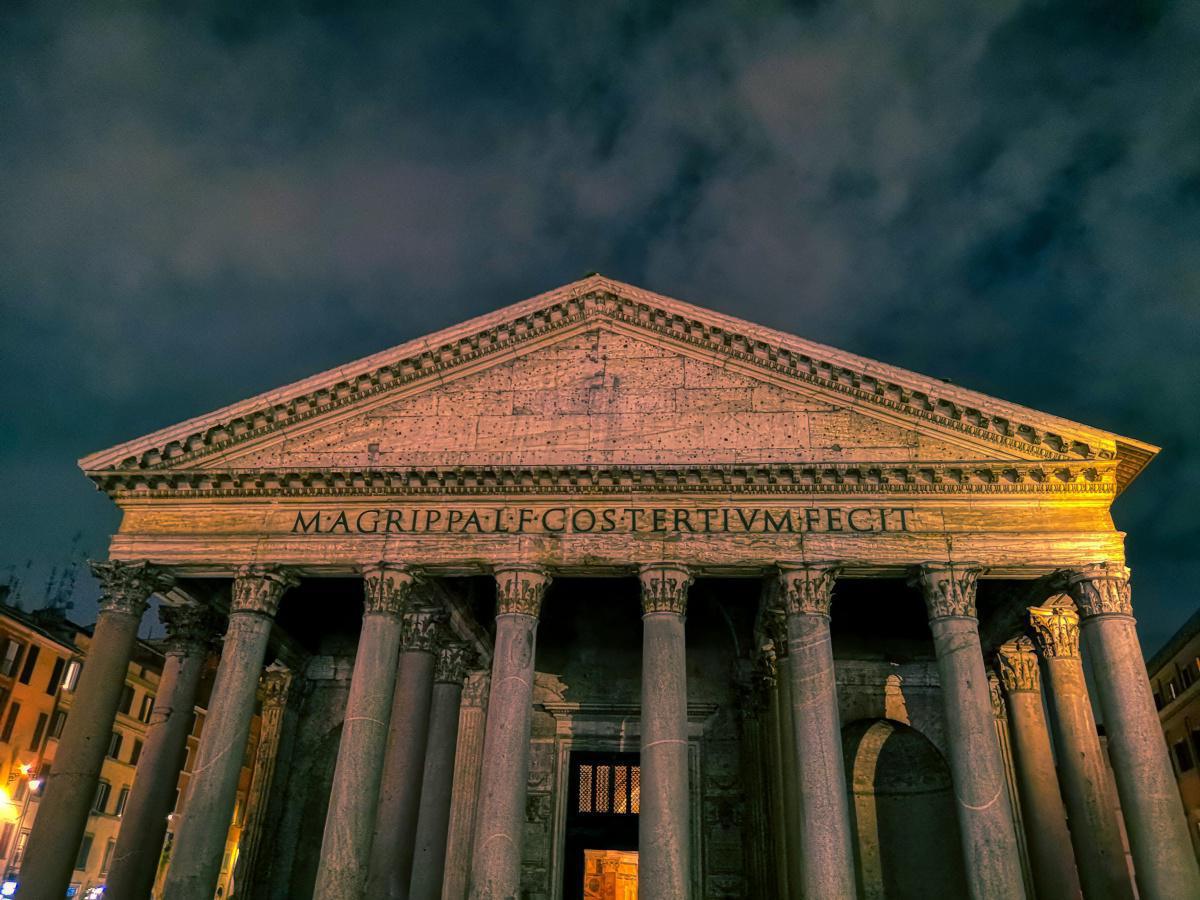
Pantheon
Piazza della Rotonda Roma
Where the Gods of Rome Faded, and the Light of Christ Endures
Listen to Audio
The Pantheon, originally a pagan temple dedicated to all the Olympian gods, stands as one of the best-preserved monuments from ancient Rome. Commissioned by Emperor Hadrian in the 2nd century AD, it was originally dedicated to "all the gods", giving the "Pantheon" its name. Its magnificent dome with the central oculus is a timeless architectural wonder, allowing natural light to flood the vast interior. Lighter materials were used near the occulus and weight was distributed outwards providing the dome with stability.
The dome is a perfect sphere. Its diameter from both right to left and top to bottom is 43.3 meters, and happens to also be the largest dome in the world, even wider than the cupola of St. Peter's Basilica. Michelangelo, who was fascinated by the Pantheon's dome, had intentionally made it slightly smaller in homage to its ancient predecessor. Filippo Brunelleschi during his time in Rome also studied the Pantheon extensively. His discoveries enabled him to design and oversee the construction of the cupola of the Duomo (Cathedral) of Florence, the first large dome to be built since the Hagia Sophia in Istanbul (Constantinople) approximately 800 years prior in the 6th century. Who built the dome originally? Some traditions suggest that Hadrian himself played a role in its design, ensuring its enduring legacy.
In the 8th century, Pope Boniface IV consecrated the temple as a Catholic church, dedicating it to Holy Mary and All the Martyrs. This transformation preserved the structure through the centuries as many of the other pagan temples in the area were demolished during the middle ages. The Pantheon subsequently is one of the oldest structures in the world to be used as a church.
Inside the church, one will notice the high altar, an icon of the Virgin Mary in the Byzantine style, a copy of one presently in the Lateran Palace, and some side altars, statues, paintings, and tombs of influential Italians. On the right you see the tomb of King Victor Emmanuel II who became the first King of modern Italy. On the left hand side, you will find the tomb of Raphael Sanzio, the Renaissance artist who led a school artists and painted the papal apartments of Pope Julius II in the Vatican as well as the Transfiguration, which can also be discovered in the Vatican Museums.
One of the most striking traditions takes place on the Feast of Pentecost, when firefighters ascend to the top of the dome and release rose petals through the oculus, symbolizing the descent of the Holy Spirit upon the apostles.
Today, the Pantheon remains both a place of worship and a historical landmark, where the glory of Rome’s past and the living faith of the Church converge beneath its towering dome.
Prayer
Heavenly Father,
We lift our prayers for the Pantheon, a place where history and faith meet under its majestic dome. We thank You for its transformation from a pagan temple to a sacred church dedicated to Holy Mary and All the Martyrs, preserving it as a beacon of worship through the ages.
As rose petals descend on Pentecost, remind us of the Holy Spirit's presence, filling our hearts with grace and renewal. May this ancient structure continue to inspire awe and devotion, guiding all who enter to a deeper understanding of Your love.
Bless those who visit and worship here, allowing them to experience Your peace and the enduring faith that has sustained this holy place.
Amen.
Recommended Nearby:
Basilica of Santa Maria Sopra Minerva
Built atop the site of a former temple dedicated to Minerva, this Basilica stands as one of Rome's two Gothic churches and one of the oldest homes of the Order of Preachers. It is renowned for being the resting place of Saint Catherine of Siena.
See Also:
Early Christian Underground
Step into the hidden world of faith's earliest roots—discover our list of catacombs and underground churches that tell the story of courage, hope, unshakable belief, and martyrdom. Unveil the sacred places where Christianity blossomed in the shadows.
Stay Connected:
Sign up and get weekly updates with new locations, itineraries and videos.



